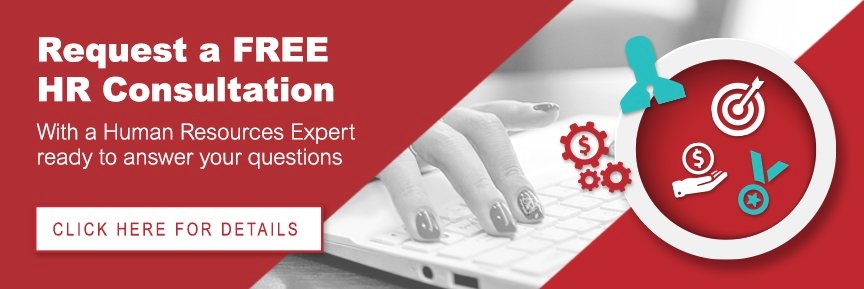
As the nation enters economic recovery, employee turnover has become incredibly high. The so-called great resignation has led to high quit rates throughout the nation. In August 2021, according to the BLS, the nonfarm quit rate hit a record high of 2.9 percent.
These high rates of employee departures challenge many businesses. Employers who wish to compete in this environment must recognize the current power held by employees and understand their needs.
Here are some of the factors companies should consider while navigating increased turnover.
Shifting Priorities Change What Employees Look For
.png?width=175&name=premployer%20(22).png) The Covid-19 pandemic has changed the priorities of many employers, particularly for those further along in their careers, typically between the ages of 30 and 45 years old. While there’s not a clear explanation as to why this is the case, it’s suggested to either be due to the cumulative stress of the pandemic workload, or a re-evaluation of personal priorities. Workers may have also stayed through jobs they did not like longer due to the pandemic, as they wanted to hold onto a stable position during such a tumultuous time and now seek to start something new.
The Covid-19 pandemic has changed the priorities of many employers, particularly for those further along in their careers, typically between the ages of 30 and 45 years old. While there’s not a clear explanation as to why this is the case, it’s suggested to either be due to the cumulative stress of the pandemic workload, or a re-evaluation of personal priorities. Workers may have also stayed through jobs they did not like longer due to the pandemic, as they wanted to hold onto a stable position during such a tumultuous time and now seek to start something new.
Some employees now prioritize being close to family rather than being close to their jobs. Many workers now feel the job they have is no longer the job they need. They may move to new locations or switch to jobs that have more flexible hours. For others, they may feel that life is too short to deal with issues their job might create, such as not getting along with their boss or a poor work environment.

High-Stress Industries Have Higher Turnover
Some fields and industries have been particularly badly affected, such as high-stress fields like tech and healthcare, as well as manual jobs, like warehousing and truck driving. These industries put workers at high risk of burnout, largely due to demanding responsibilities and long hours. Many workers in those fields want a change of careers or even early retirement. Combined with the issues of the pandemic itself, workers in these areas are in high demand and low supply, and the ones who remained were often overworked.
Companies have a limited number of available personnel to work with, and they must ensure their existing workers can balance their workloads. It is in their interest to detect and reduce employee burnout, as well as offer competitive benefits and salaries to attract replacements if needed. Rearranging workers and cross-training employees can help to broaden the workload away from individuals, helping your staff feel more supported and better able to complete their tasks.
Employees Seek More Flexibility
In March 2020, there was an unprecedented pivot to remote work. The common wisdom of remote workers being less productive turned out to be mostly false. Employees have come to desire and expect the greater flexibility and work-life balance that comes with remote work and flexible shifts.
Many employees have quit to find a job that allows for remote work, and many of these are moving to more affordable areas away from expensive cities or states attempting to improve their way of life. For others, remote work allows them to move closer to family, friends, or recreational activities.
The pandemic has sped up many people’s career and life goals, and now they’re seeking greater advancement. In any case, employees now expect to be able to work in ways that suit them, affording them the flexibility they need to balance their lives. Offering remote work options or switching to a 4-day work week helps employees balance their lives better. That increased flexibility helps them spend more time on family or recharge to be more productive at work.
How to Improve Employee Retention
Surviving in this environment requires employers to take steps to improve retention. You need to adapt your workplace to be more attractive to employees, for existing employees to stay and to recruit new talent.
Here are some key shifts that can help reduce turnover:
Offer Improved Benefits
Better benefits show companies care about their staff’s well-being, whether you’re offering better health care, generous PTO and retirement plans, or even softer perks, like flexible time or remote work capabilities.
.png?width=175&name=premployer%20(23).png) It can be a challenge for smaller companies to offer competitive benefits solely from their own capacity, simply because it can be a costly investment. Partnering with a PEO offers access to healthcare benefits you couldn’t normally get, as well as the services to administrate them adequately. By allowing your employees to enroll in their master plan, you can offer enterprise-level benefits regardless of the size of your company.
It can be a challenge for smaller companies to offer competitive benefits solely from their own capacity, simply because it can be a costly investment. Partnering with a PEO offers access to healthcare benefits you couldn’t normally get, as well as the services to administrate them adequately. By allowing your employees to enroll in their master plan, you can offer enterprise-level benefits regardless of the size of your company.
Make Sure Employees Fit in Their Role
Make sure that both new and existing employees are in roles that are comfortable and well suited to them. Ensuring that employees are in the right roles to start helps reduce turnover by making them less likely to leave to find something they have more qualifications for or are happier doing. When onboarding employees, check with them about how they feel about their role. If you have opportunities within your company, you can move them internally to a better-fitting role.
When you find employees you like but don’t have a spot for them currently, keep in touch with them in case new positions open up. That allows you to develop your relationships with prospective talent and keep the opportunity open with them as you grow your company.
Empower Employees to Grow and Flourish
Many employees feel that they must change jobs to grow. However, you can circumvent this by providing all employees with professional development opportunities. Doing so allows you to expand and improve your offerings by providing more sophisticated services. When you need to expand and change departments, search internally to promote your own staff into the role. Consider how employees can advance and grow without needing to move to a management position that may not suit them.
Create Communication Channels with Your Staff
More traditional top-down models seldom provide opportunities for staff to provide proper feedback. Make efforts to listen to your staff to know how to adjust morale, encourage positive behaviors with improved feedback, and gain more from their expertise. Helping your employees helps your business thrive.
Many of the reasons causing high turnover have not gone away, and will likely continue through 2022. However, businesses that adjust early will be better able to adapt to trends and succeed into the coming years.
Achieving many of these things requires a lot of work from HR, and improving their efficiency can make a huge difference. Partnering with a PEO helps you offset internal responsibilities, freeing up your HR staff to do more important tasks that require their specific knowledge and expertise.

